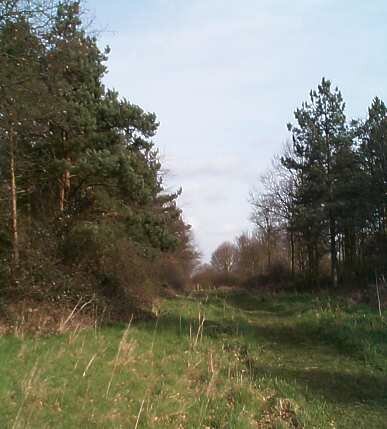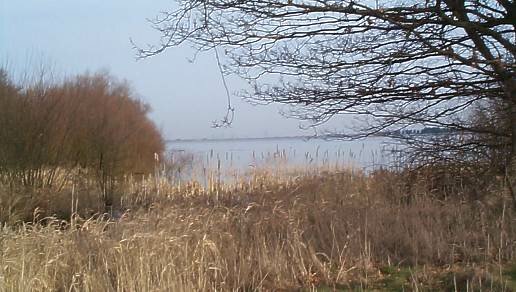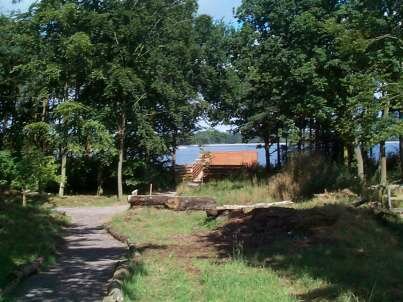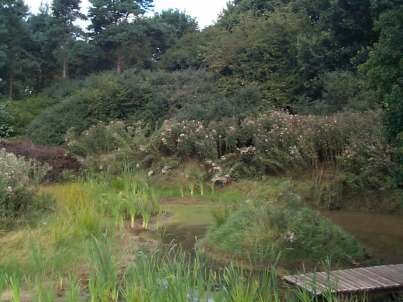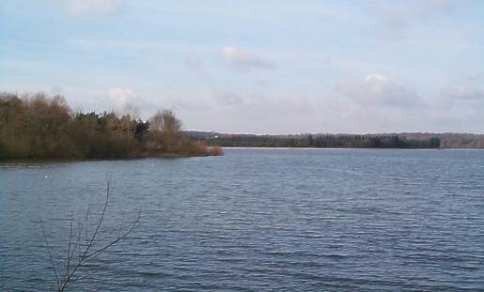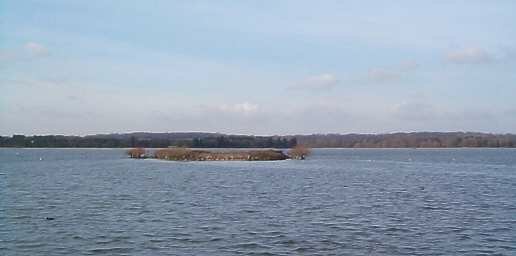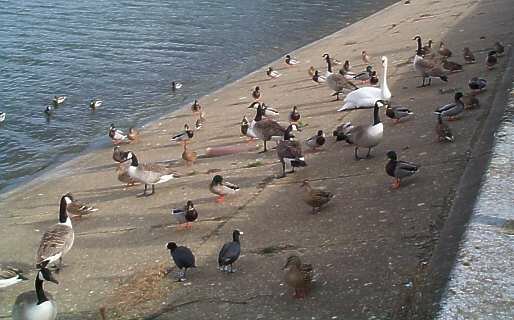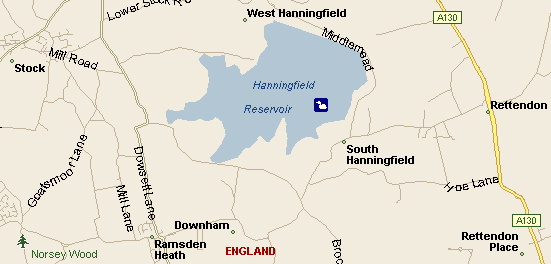The wildlife reserve at Hanningfield consists of some 100 acres of mixed woodland at the south-eastern end of the Reservoir. At least 30 acres of this, Well Wood and Hawk's Wood, is ancient in origin. Ditch and bank boundaries, dating back centuries, mark the extent of the old coppice and some remnant of the original hornbeam community survives. There is a great diversity of wildlife, with many species indicative of ancient woodland habitats. The show of spring flowers, in particular bluebells, yellow archangel and stitchworts, is not to be missed. The reservoir is an SSSI and the whole Water Company area around the reservoir has statutory designation as a bird sanctuary. The spectacle of 80,000 swifts, swallows and martins feeding over the water during peak fly hatches is just one of the delights for the summer visitor, although most people will probably associate the reservoir with large numbers of waterfowl. Gadwall, tufted duck and pochard are three of the important breeding species and year-round coot numbers are of national significance. Much of the reservoir can be scanned from the hides, with especially good views over an island that is popular with wildfowl and a raft provided for terns to nest. At this time the conifer plantations are gradually being thinned, followed by underplanting with native broadleaved species, hazel in particular. Woodland glades are being created, linked by grassy rides, and ponds are being rejuvenated. Coppicing of neglected hornbeam stools has begun again. Directions and Details On Hawkswood Road, which runs from the B1007 south of Chelmsford Turn on to Giffords Lane off South Hanningfield Road south of South Hanningfield village. The lane leads down to Essex & Suffolk Water Company's Fishing Lodge and a public car park. The reserve entrance is beyond the lodge From October 2000, Visitor Centre open daily except non-Bank Holiday Mondays from 9 am to half-hour before sunset, serving refreshments and a wide range of optical equipment and gifts. When Centre is closed, limited access on weekdays from Essex & Suffolk Water's Fishing Lodge on Giffords Lane, south of South Hanningfield village. Disabled parking and toilets will be available at the Centre; a disabled pathway will run from there to a bird hide equipped for disabled users.
The Woods of HanningfieldCrowsheath Wood 17 acres of ancient coppice woodland with 3 acres of adjoining open land. The many mature standard oak trees are an impressive feature of the wood. The coppice trees are mainly hornbeam, with a little ash, midland hawthorn, field maple and wild service. The ground flora is varied, and includes bluebell, wood anemone, primrose, pignut, ragged robin and goldilocks buttercup. Lesser spearwort is present in the ponds near the centre of the reserve. Most of the bird species typical of lowland broadleaved woodland are present. Several species of warbler (including Sedge Warbler), tits, woodpeckers, Nuthatch and Nightingale have been recorded. Much of the western part of the wood has been coppiced in recent years, and some broadleaved trees have been replanted; coppicing is being extended to enhance wildlife interest. The open land is grazed by horses. Routine management consists of removing invading bramble and keeping the paths clear. The woods are less than 1/2-mile south of Hanningfield Water in the parish of South Hanningfield. Access is from Crowsheath Lane, which runs south from the road causeway across Hanningfield Reservoir towards Downham. Please note that the wood is marked as Thrift Wood on many maps the Trust elected to adopt a local name to avoid confusion with its Thrift Wood reserve at Bicknacre. Well Wood An ancient woodland that was replanted with a conifer and hardwood mix during the 1960s. However, a rich diversity of wildlife still survives and remnants of the old plant and animal communities are carefully managed with the aim of eventually returning more of the wood to its original hornbeam and hazel coppice with oak standards. The Centre at Hanningfield has now opened. Below are two photographs depicting just two of the new areas. Hanningfield Reservoir is now a regular place to see Coal Tit, and you just can't miss long-tailed tit there now. It is also very reliable for Goldcrest and Great Spotted Woodpecker. Hanningfield is also good for Ruddy Duck, Great Crested Grebe and Grey Heron, and in winter Goldeneye, Teal, Wigeon and the possibility of Smew.
With kind thanks to the Essex Wildlife Trust: http://www.essexwt.org.uk/
|
Page last updated:
Web Design Graham Mee. © Copyright of all pages South East Essex RSPB Local Group. All images copyright of owners
The Royal Society for the Protection of Birds. Registered charity no 207076



